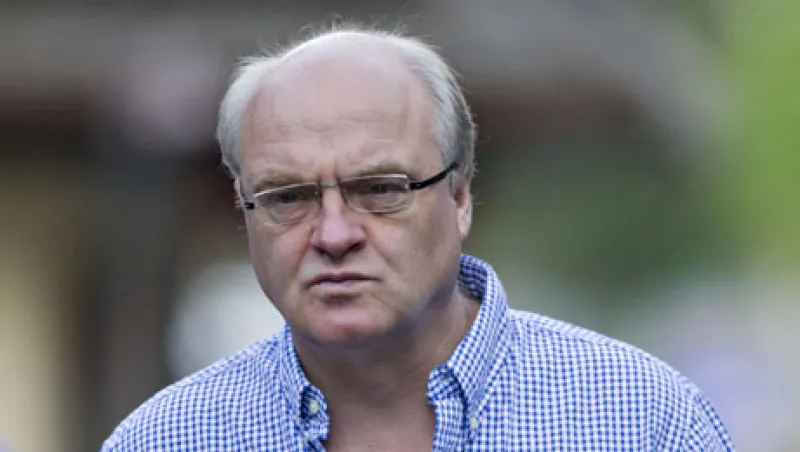Baillie Gifford, the £111 billion ($168 billion) Scottish equities manager, first invested in Amazon.com in 2004, when the company’s stock price was still struggling to recover from the bust of the dot-com bubble. Some 11 years later, at $289.44 per share as of market close January 20, Amazon.com stock trades at more than six times its December 31, 2004, close at $44.29.
The Edinburgh-based firm, founded in 1908, sees its history with Amazon.com as testament to the benefits of its long-term approach, which Baillie Gifford believes is essential for strong long-term performance. Its £5.3 billion Diversified Growth Pension Fund had an annualized return of 11.2 percent between its December 2008 launch and September 2014, compared with a benchmark return of 0.5 percent. Baillie Gifford’s £3.2 billion Global Alpha Pension Fund produced an annualized return of 8.9 percent between its September 2006 launch and September 2014, compared with 7.2 percent for its benchmark MSCI All Country World index. Over the five years to September 2014, it returned 12.5 percent (versus 10.3 for the benchmark), a three-year 17.3 percent return (versus 15.7 percent) and a one-year 9.5 percent return (versus 11.8 percent).
“We’re looking out five to ten years to try and assess where we think a company could grow to. We generally hold our companies for that long,” says Nick Thomas, partner at Baillie Gifford and director in the firm’s clients department, with responsibility for North American customers. “We think that is pretty different now from how other investors behave.” He notes that the average period for which stocks are held in global financial markets is less than one year.
Skeptics might argue that there is an inherent tension in the Baillie Gifford approach, which also eschews benchmark tracking. Most clients who judge its performance against conventional benchmarks agreed with the firm. Are clients prepared to accept the risk that returns could, certainly for a while, be significantly below as well as above the benchmark? “We always try and make clients look at the world in a way that’s compatible with the way we do,” says Thomas. “It’s not in the client’s interest, or our interest, to have big mismatches in time horizons.”
The firm’s investment gains, when combined with net new client inflows that have averaged 4 percent over the past ten years, have enabled it to keep growing at a healthy clip. Assets under management increased by 31 percent between December 2012 and November 2014. U.K. pension funds account for 23 percent of the firm’s business. “It feels like the growth has been fairly steady,” says Thomas. There have, however, been spurts in individual markets. The number of clients in Asia and Continental Europe has doubled over the past five years, with Asian clients accounting for 7 percent and European clients accounting for 3 percent of Baillie Gifford’s assets under management.
He thinks that the company’s management structure has also helped Baillie Gifford expand its U.S. business in recent years, largely in ex-U.S. global equities mandates, though it has hardly any base in the U.S. All but about ten of its 780 staff work in Edinburgh, and the gap across the Atlantic is filled by much to-ing and fro-ing by air travel. “One thing highly valued by U.S. and Canadian clients is corporate stability,” says Thomas. “They don’t like the disruption of corporate activity, and there is quite a lot of corporate activity in the fund management sector.” In Thomas’s view, Baillie Gifford’s partnership structure affords stability — the firm is wholly owned by its 40 partners. “The fact that we are a privately owned company will not change. That gives the clients the certainty that they won’t have to deal with distractions, and in some cases appoint a different manager.”
He thinks that U.S. clients also like the very long investment return history to which Baillie Gifford can point. Its flagship global equities fund, the Scottish Mortgage Investment Trust, a closed-end fund with assets under management of £3.5 billion, has averaged an annual return since 1965 of 12.97 percent. In the 20 years to September 2014, it has averaged 10.89 percent, far above the FTSE All-World index’s 7.48 percent. For what it describes as its typical global equity strategies, the annual return for the five years to September has averaged 13.2 percent, against 10.3 percent for the MSCI All Country World index. Its five pooled global equities pension funds have £4.5 billion in assets under management.
Recently acquired U.S. clients include pension fund Delaware Public Employees’ Retirement System, which initially hired Baillie Gifford in 2007 to run some of its global equities allocation. Explaining why the fund took on Baillie Gifford, David Craik, Dover, Delaware–based pension administrator for the State of Delaware, says, “They had clearly decided on what their objective was: low turnover and growth oriented, based on bottom-up stock picking with long-term investment horizons.” Craik liked both the clarity of the objectives and the objectives themselves.
The fund also invests very much off-benchmark. Thomas says that Baillie Gifford’s equity strategies are around 90 percent active (if one considers an index fund as zero percent active and a fund that holds no stocks in an index as 100 percent active). Baillie Gifford does invest in constituent stocks of major indexes, but is 90 percent active because it tends to have a much bigger weighting in the index in a smaller number of stocks.
When describing Baillie Gifford’s investment style, Thomas is reluctant to talk about big macro views, arguing that the firm takes a bottom-up approach. There is, however, a particular type of preferred company. “Growth stocks are the staple of what we do,” he says. “If you’re looking out over ten years, naturally you’re going to be looking for the company to grow.”
Some stocks have been held for much longer even than the decade for which the firm has owned Amazon.com. More than two decades ago, Baillie Gifford bought shares in Atlas Copco, a Swedish manufacturer of industrial machines, including those that compress air. Much of the company’s growth has largely been fueled by China’s industrialization and enhanced by high-quality management. Atlas Copco’s share price has risen sevenfold since the firm first bought its shares in 1996. Its shares were trading around 219 Swedish kronor ($27) in early January.
Get more on equities .






